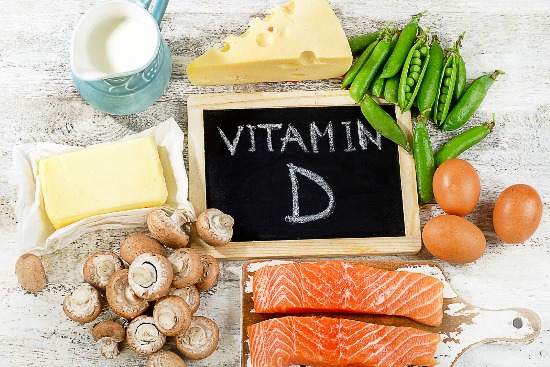
Vitamin D is a precursor hormone and has multiple roles in the human body. It helps to maintain the health of bones and teeth, support the health of the immune system, brain, and nervous system. It also helps regulate insulin levels and aid in diabetes management. Vitamin D also supports lung function and cardiovascular health while influencing the expression of genes involved in cancer development.
Researchers in clinical studies had tested fifty-five adults between 18 and 65 with artificial light sources containing ultraviolet radiation or UV rays. The adults participating in this study were told to sit under a heat lamp or UV light in their underwear for up to 10 minutes. Researchers noticed that their vitamin D levels increased afterward. Of course, buying UV lights or heat lamps and sitting around under those lights in your underwear might not be the best or easiest solution for most people.
It is estimated that sensible sun exposure on bare skin for 5-10 minutes 2-3 times per week allows most people to produce sufficient vitamin D, but vitamin D breaks down quite quickly, meaning that stores can run low, especially in winter. In fact, recent studies have suggested that a substantial percentage of the global population is vitamin D deficient partially because of this.
Spending time outside is one way to get vitamin D, but eating a more healthy and balanced diet can help too. Standing outside in the freezing cold in winter attempting to get some vitamin D isn’t comfortable nor is it realistic for many people as a method to beat “cabin fever.” Adults, aged 1-70 need about 600 IU (international units) of vitamin D per day and adults over the age of 71 require 800 IU per day. Some experts say humans need closer to 1000 IU of vitamin D per day. That’s equal to 20-30 minutes in the sun without sunscreen for those with pale skin. While supplementation is perfectly fine (and relatively affordable), sunshine is still free and the best way for you to increase your vitamin D levels.
Supplements are becoming more affordable, and there are several options for vitamin D on the market if you live in a cold winter climate. Try starting lower though, so your body can adapt. Your body does not absorb vitamin D from supplements as well or quickly as it does from the sun, so you will need to take higher doses. Try a 600 IU supplement and gradually increase up to 800 IU. Just one tablespoon of cod liver oil will provide your body with 1,360 IU of vitamin D
If you would like to consume more vitamin D, there are also many ways to boost the essential vitamin by eating. You should eat a sufficient amount of cholesterol. A lack of cholesterol has been shown to cause malnutrition due to the lack of fat-soluble vitamin absorption. You should also make sure you have sufficient vitamin D cofactors such as vitamin K2, magnesium, boron, and zinc.
Some foods that provide a high level of vitamin D are fatty fish, like tuna, mackerel, and salmon. A mere 4 ounces of cooked swordfish contains 941 IU. Other foods which are fortified with vitamin D, like some dairy products, orange juice, soy milk, and cereals are also excellent sources of the essential vitamin. Beef liver, cheese, and egg yolks will also help you boost your level of vitamin D. In order to get enough vitamin D from your food, fish is a good option. Three ounces of cooked salmon has more than 450 international units (IU).
There are risks when attempting to boost your vitamin D levels, and as with anything, consult a doctor if you need to. Excessive consumption of vitamin D (hypervitaminosis D) can lead to over-calcification of the bones and hardening of the blood vessels, kidneys, lungs, and heart. The most common symptoms of hypervitaminosis D are a headache and nausea but can also include loss of appetite, dry mouth, a metallic taste, vomiting, constipation, and diarrhea. However, the National Institutes of Health (NIH) has suggested that vitamin D toxicity is unlikely at daily intakes below 10,000 IU per day, but again, consult your doctor if you are concerned about your vitamin D levels at all.
*This article is for information purposes only and is not meant to diagnose or treat any disease or illness. Consult your doctor if you have major concerns regarding your health and overall well being.


Disinfo.. author falling for the fake RDAs. To reach the optimum blood level of D3, as does 10 minutes of sun between 10am and 2pm in lower latitudes, that being 60ngm/mml of blood you need approx 8,000iu of D3.